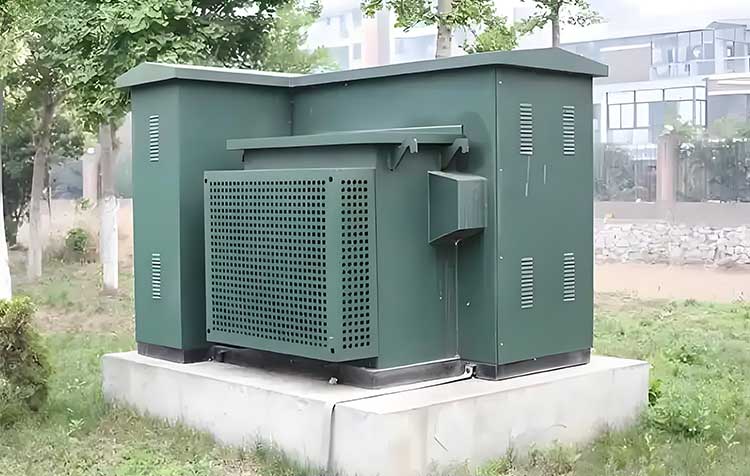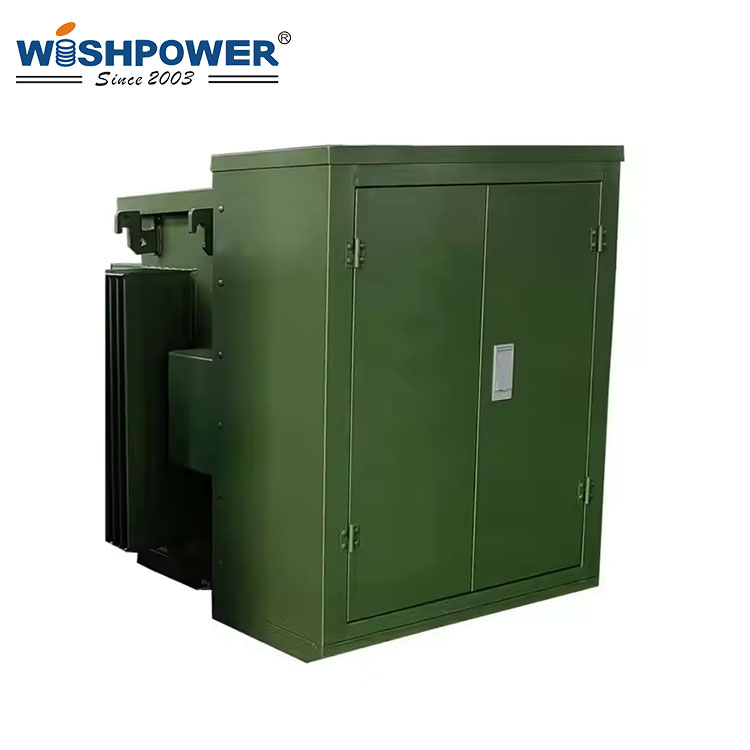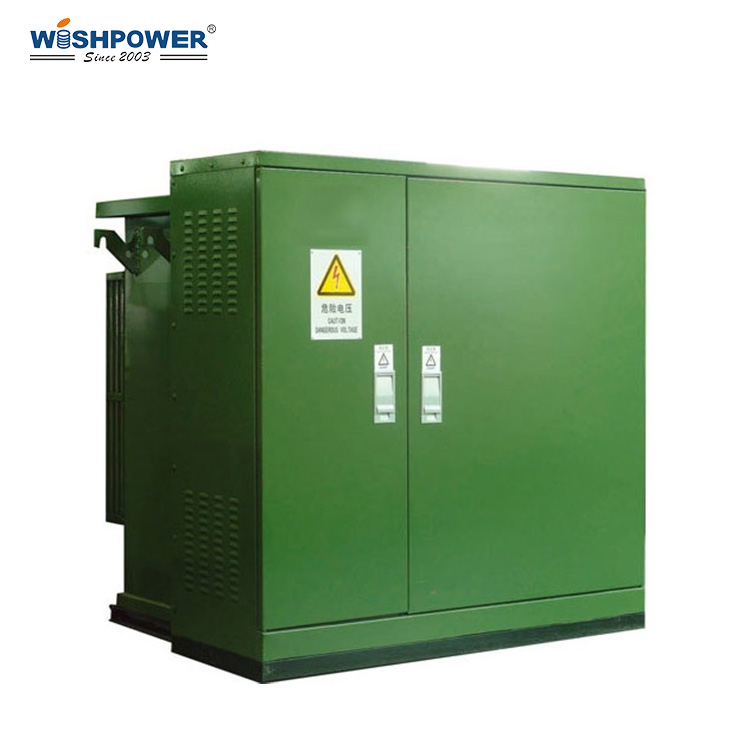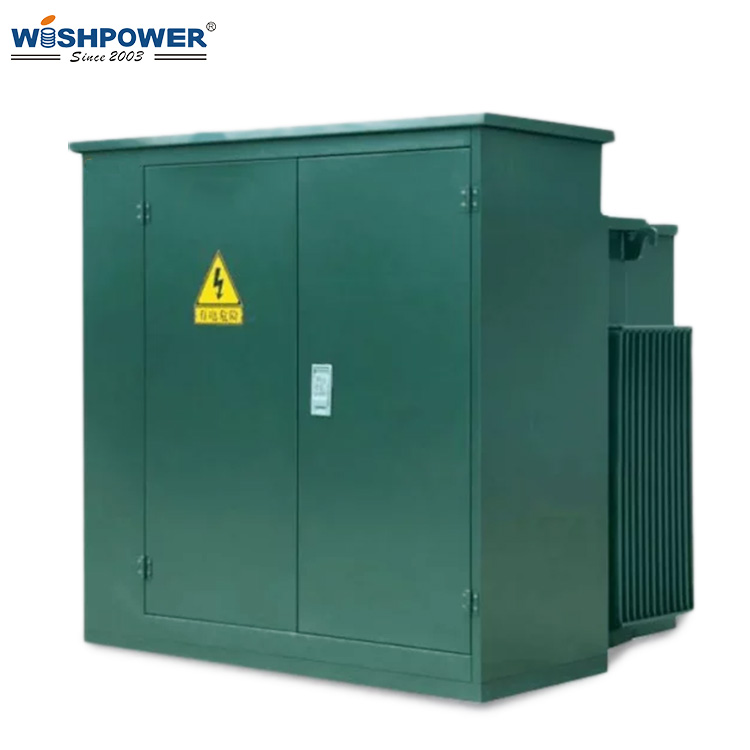Pad mounted transformer is an important component of a modern electrical distribution system intended for safe and economical operation. These are situated at the ground level, enclosed in a secure cabinet, and thus can be used in outdoor settings.

Placement Primary Considerations
Accessibility
Installation, inspection, and maintenance of the transformer should be easy. There should be sufficient clearance around the unit to allow technicians to do routine tasks, or emergency repairs, safely.
Safety Regulations
There are many regulations to which we must adhere and amongst them are local building codes and utility requirements. Generally, these regulations stipulate a minimum distance to the building, fence, or public access area.
Environmental Protection
Flooding risks, excess vegetation, and extreme exposure to environmental elements, such as direct sunlight, or corrosive atmospheres are to be avoided at the installation site.
Typical Installation Sites
Residential Areas
Medium voltage electricity is frequently brought into neighborhoods and step down to usable voltages in pad-mounted transformers for home use. Usually, they are located at the edge of properties or next to sidewalks, on a safety barrier or landscaping, in order to lessen their visual impact and prevent access.
Commercial Complexes
Pad-mounted transformers are used to serve more than one building in a commercial area such as a shopping mall or office park. Typically, they’re located near loading docks, parking lots, or service areas to strike the balance between accessibility and beauty.
Industrial Facilities
Transformers must be used in industrial settings that have a high level of energy operations and machines that are not small. Typically, they are placed inside fenced enclosures — or substations — to ensure they can operate safely and to prevent unauthorized usage.
Public Infrastructure
Areas, that secure power supply and have placed transformers for public infrastructure such as schools, hospitals, and municipal buildings are placed. Efficiency requires that the facility’s main electrical system is frequently a priority due to proximity to it.
Installation Site Preparation
Concrete Pad Construction
To support the weight of the transformer, and maintain stability, the foundation is key. A properly designed concrete pad is designed to prevent tilting, shifting, or damage from ground movement.
Drainage Systems
No water accumulation should occur around the transformer because effective drainage will prevent this ability. Water should be directed off the unit by grading the site.
Grounding Requirements
The safety and functionality of the transformer depend a great deal on a robust grounding system. They ground rods and grids for a low resistance path to earth to protect the system when it undergoes fault conditions.
Spacing and Clearance guidelines
Minimum Distances
Typically, regulations impose minimum distances from buildings, fences, and other structures. For instance, some amount (usually 10 feet) from combustible material or doors is often specified.
Access Paths
Service vehicles and personnel should have clear paths. Access or operation will be hampered if vegetation is not kept trimmed.
Public Safety
Keeping the public, especially children, away from live equipment is done with barriers, signage, and locked enclosures.
Environmental and Aesthetic Interface
Visual Integration
But transformers may also be encountered in those urban or suburban situations where they may be hidden among landscaping or in decorative enclosures to minimize visual impact. These shouldn’t impede ventilation or access.
Eco-Friendly Practices
Environmental sensitive installations require selecting locations from which natural habitats will be avoided, as well as implementing erosion control measures.
Compliance and Planning
Utility Coordination
The chosen location is ensured to be such that it collaborates with utility providers to ensure that it meets grid design and load distribution requirements. Often, utility companies will conduct site surveys to ensure compliance with technical and safety standards.
Future Expansion
Site selection from the perspective of future infrastructure needs including increased energy demand helps to select a location that allows for scalability without significant redesign.
Where do you put a pad-mounted transformer?
The pad-mounted transformer location selection must be properly planned and should conform to safety, operational, and environmental guidelines. The essential electrical components that should be installed to provide reliable, safe, and efficient power distribution can be installed considering factors such as accessibility, regulatory compliance, and site preparation. Right locations are selected for longevity and low costly redundancy, delivering energy sustainably and effectively into a wide band of settings.
If you have different opinions or want to know more, please leave a message on the website or contact us directly at info@wishpower.net

















